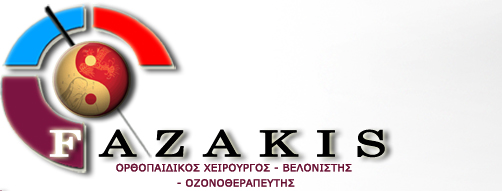From the early stages of recorded history humans needed to deal with wounds, especially fractures. This led them to invent various ways to face these problems depending though on the means available and the point of time in history.
There is recorded evidence that Aztec doctors of the 16th century used wooden rods along the lumen of bones to deal with joint problems, and more evidence from the 18th century (Gluck) of the use of ivory intramedullary nails with holes on their edges in order to use interlocking ivory pins through them.
Even though there are numerous recorded attempts that are considered prototypes of intramedullary nailing by inspired Scientists (Senn, Delbet, Royal-Whitman, Smith-Petersen, Nikolaysen,Lambotte, Hey Groves, Rush, Lambrinudi, Watson Jones, Danis) it is widely accepted that the founder of intramedullary nailing in its modern form is Gerhard Kuntscher(Zwickau, Germany, 1900-1972). At the age of 40 he published his views on intramedullary nailing and established the basic principles of this method as follows:
- Closed reset of a fracture (without surgery)
- Stable internal osteosynthesis
- Rapid charging of the leg
The initial plan was based on the perfect fit of the nail on the bone (Kuntscher nail), at first it was a V shape and after extended research it evolved into a clover shaped intra lumen nail. The fundamental prerequisite for the intra lumen application of the nail was the reaming of the bone. Even though Kuntscher invented the locking nail, with the intention of improving stability of the fracture centre, he never managed to build it.
Although in the beginning his views didn’t gain the approval of scientists, due to poor technical knowledge of the time, intramedullary nailing constitutes the golden rule of modern orthopaedic surgery in dealing with fractures of the long lumen bones, when used accordingly.
The fact is that since the late 60’s, the evolution and improvement of image amplifiers (C- arm) has made the use of locking nails easier.
Taking into consideration the stages of healing of a fracture, in other words – the formation of the hematoma, the start of the inflammation process of the body, the appearance of granulomatous tissue, its development into a temporary soft healing, its transformation into hard healing and finally the definite reconstruction – we can adequately understand that the basic characteristics of intramedullary nailing (biological and elastic osteosynthesis, internal casting) leads to the creation and the maturation of the bone healing, and in addition the leg can be moved and withstand pressure more quickly.
As far as Surgery is concerned, intramedullary nailing is a surgical process which is minimally invasive, biologically friendly and it constitutes an ostheosynthesis process of low load segmentation.
In regards to biomechanics, intramedullary nails provide relevant and not total stability, allow micro-movements at the fracture focal point and promote secondary healing. The mechanical properties of the nails (diameter, external thickness, cross section, material) constitute an issue of continuous improvement, in order to achieve better results.
The reaming process, even though it affects bone haematosis, contributes to the haematosis of the exterior of the bone and along with material used for the reaming constitutes an excellent substrate for quick and definite healing.
There are two types of nailing (dynamic and static) depending on whether the nail was locked in one or both ends (central or peripheral), as well as the use of reaming or not.
The continuous development of the technical specification of intramedullary nail design (elongated curvature nails, lumen nails, lockable nails) as well as the tools used (flexible reamers, sharp and hollow for the reduction of pressure in the lumen of the bone), leads to improved results in the safety of their application and their possible use in other orthopaedic conditions other than traumatology.
Nowadays, the series of conditions in which an orthopaedic surgeon can operate on using intramedullary nailing is as follows:
- Long bone shaft fractures (forearm, femur, tibia)
- Pertrochanteric fractures of the femur
- Fractures of the lower end of the femur (reverse nail)
- Combined fractures- fractures of the lower end of the tibia
- Open fractures of long bones (grade I to IIIb , according to the classification by Gustilo- Anderson)
- Pathological or imminent fractures
- Non septic pseudarthrosis of long bones
- Osteotomies and elongation of long bones
- Arthrodesis of the knee and the ankle
On the other hand, we need to mention conditions with absolute contraindications to intramedullary nailing, such as:
- Co-existing pneumonic fractures (usually in patients with multiple trauma)
- Grade IIIc open fractures
- Septic pseudarthrosis
- Pseudarthrosis of the forearm
- Open epiphyseal plates
- Active Infections
- Haematosis disorders
On the other hand, we ought to mention that the mandatory use of x-ray screening during an intramedullary nailing operation exposes personnel present in the surgery room to radiation. With the use of modern C-arms and protective garment, exposure has been drastically reduced to levels tolerated by the human body. In the future, it is certain that new intramedullary nailing methods will be able to provide solutions for more of the conditions that an orthopaedic surgeon has to deal with, given that the prompt action and faster rehabilitation results in lower patient morbidity.
